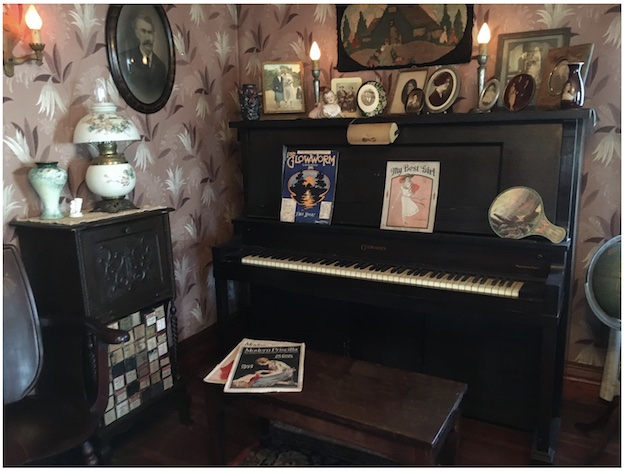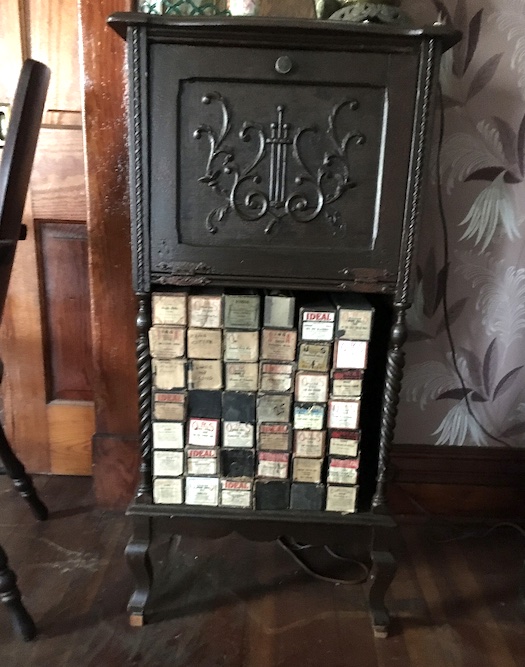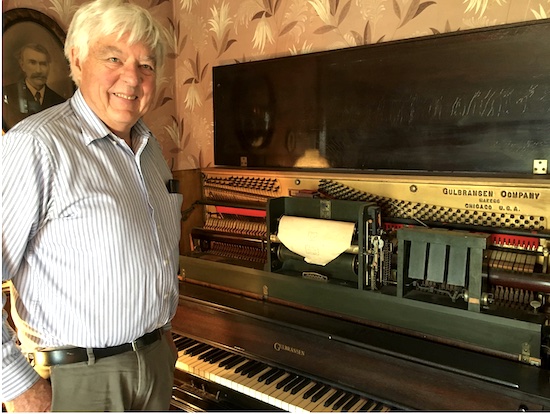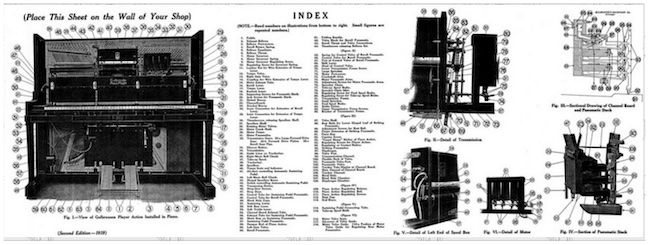Historic Childs: Musical Instruments – Part 4, The Gulbransen Player Piano
By Doug Farley, Cobblestone Museum Director – Vol. 3 No. 13
CHILDS – This is the fourth article in the “Historic Childs-Musical Instruments” series, and the subject instrument is a Gulbransen Player Piano built in 1926. This upright player piano is part of the artifact collection at the Cobblestone Museum’s Vagg House, a 1920s home that was once the residence of the last blacksmith on Ridge Road, Joseph Vagg, and his wife, Nellie.
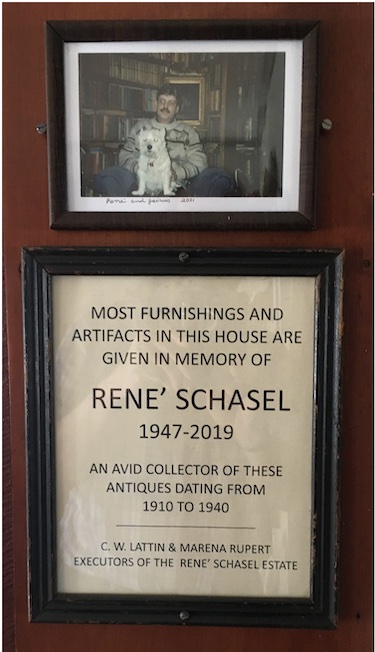
René Schasel & “Jairus,” 2001
The Museum was fortunate to acquire the Gulbransen Player Piano as part of the Schasel Collection of artifacts, donated by the Estate of René Schasel in 2020.
A player piano (also known as a pianola) is a self-playing piano, containing a pneumatic or electro-mechanical mechanism, that operates the piano action (keys) via programmed music recorded on perforated paper, or in rare instances, metallic rolls. The rise of the player piano grew with the rise of the mass-produced piano for the home, in the late 19th and early 20th century.
Sales peaked in 1924, then declined, as the improvement in phonograph recordings due to electrical recording methods developed in the mid-1920s. The advent of electrical amplification in home music reproduction via radio in the same period helped bring about their eventual decline in popularity, and the stock market crash of 1929 virtually wiped out production.
Gulbransen Company of Chicago was an outstanding musical instrument manufacturer of player pianos and home organs. It also made reed organs. It was originally established in 1904 by Axel Gulbransen as Gulbransen Piano Company. In the history of musical instruments, Gulbransen is notable for several innovations.
In its early years, Gulbransen made the first upright piano with a player piano mechanism in the same case. By the 1920s, thousands of player pianos were manufactured by the firm. Later, in the electronic organ era, Gulbransen pioneered several innovations in the production of home electronic organs that became industry standards.
The Museum’s Gulbransen Player Piano is completely operated by “foot power.” There are no electrical components. The piano player operates the piano by pumping a pair of pedals that power a large bellows in the bottom of the piano.
The air in the bellows moves through a labyrinth of air tubes that operate the 81 pneumatic pumps that move the hammers that strike the piano wires. Intent to play notes is produced via perforated paper rolls that are “programmed” to produce every note needed to play chords and melody to perform a specific song.
The musical repertoire for the instrument is only limited by one’s ability to acquire additional player piano rolls as shown above.
The Museum’s player piano is now maintained under the watchful eye of Dennis Mellander of Pavilion, seen here.
“There’s a million things that could go wrong with it,” Dennis said. He noted that every key has its own little pump and those can go bad, and there is a lot of cloth and leather parts that will dry out. “Moving parts give out,” he said.
The Gulbransen has several levers that are used to control certain actions in the player piano. The “pianist” can change the volume of the instrument and adjust the tempo. A lever also locks the keyboard when needed.
Mellander stated, “The levers give the player the ability to add some musical expression to the composition.”
Dennis taught instrumental music at Byron-Bergen Middle School before retiring. He currently has a private studio and teaches individual students and also repairs pianos on the side. His resume is embellished in that he is the principal organist at St. Mark’s Episcopal Church in Le Roy.
The Cobblestone Museum is planning a fall “concert,” to demonstrate the Gulbransen Player Piano and also the Museum’s Edison Cylinder Phonograph at the Vagg House on Friday, September 23 at 6 p.m. Light refreshments will be served. If you’d like to be included in the “audience,” call the museum at (585) 589-9013 for a reservation. A free-will offering will be gladly accepted.
























